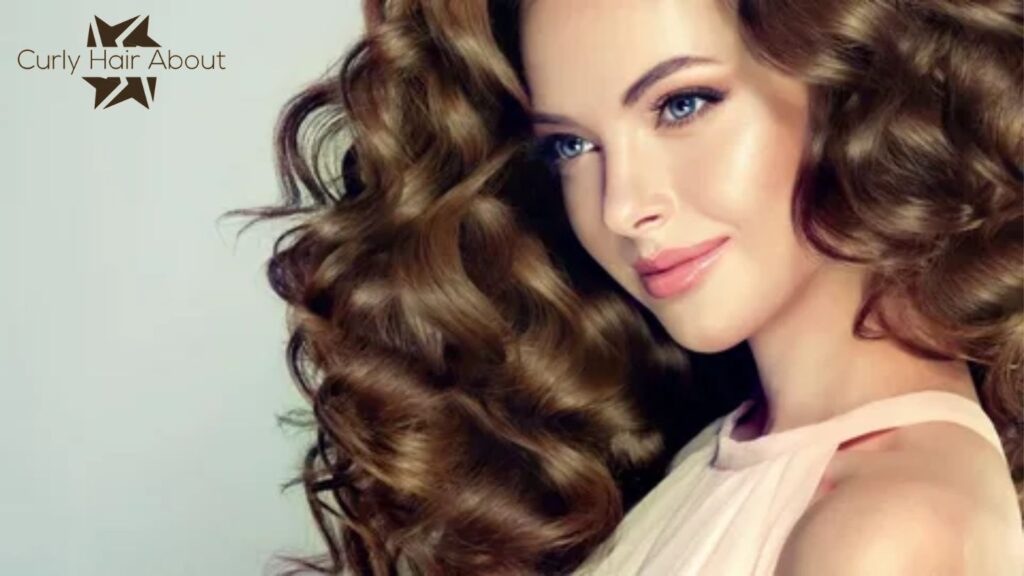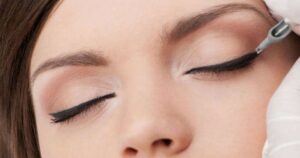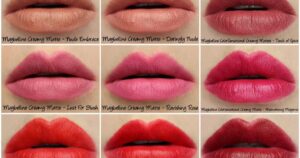Spaniards Have Curly Hair is a stereotype suggesting that individuals of Spanish descent commonly possess curly hair. It’s important to note that such generalizations oversimplify a diverse population.
Dive into the intriguing world of hair stereotypes with Do Spaniards Have Curly Hair? Unravel the myths and truths behind this cultural perception, exploring the diverse tapestry of Spanish identity beyond simplistic assumptions.
delves into the cultural stereotype suggesting that individuals of Spanish descent commonly have curly hair. This exploration aims to challenge preconceptions and highlight the diversity within the Spanish population, going beyond simplistic generalizations.
Historical trends in Spanish hairstyles

Throughout history Spanish hairstyles have reflected cultural shifts and beauty ideals. In medieval times women often adorned their hair with intricate braids and jewels showcasing a regal aesthetic. The Renaissance saw elaborate udos and headpieces symbolizing opulence and sophistication.
The 19th century embraced natural waves and curls, influenced by romantic ideals. In the 20th century flamenco-inspired styles and short bobbed hair became popular mirroring societal changes.
Today, Spanish hairstyles showcase a blend of tradition and modernity, celebrating the rich tapestry of the country’s diverse history.
Current trends and preferences in Spain
In Spain, current hair trends showcase a diverse range of styles and preferences. Many people embrace their natural textures whether it’s straight, wavy, or curly. There’s a growing acceptance of individuality, with Spaniards expressing their unique personalities through hairstyles.
Short chic cuts are in vogue reflecting a modern and dynamic lifestyle. Additionally vibrant hair colors and bold highlights are gaining popularity allowing individuals to experiment with their look.
Men often sport well-groomed beards adding a touch of rugged charm. Overall, the trend in Spain leans towards self-expression and embracing the beauty of natural diversity, creating a vibrant and inclusive atmosphere in the realm of hairstyling.
Genetic studies on hair types in Spain
Genetic studies on hair types in Spain reveal fascinating insights into the diversity of Spanish populations. These studies explore the role of genetics in determining whether individuals have straight, wavy, or curly hair.
They highlight the unique genetic makeup contributing to the varied textures observed across different regions of Spain. Understanding these genetic factors enhances our appreciation for the rich tapestry of hair diversity within the Spanish population.
Which race has natural curly hair?
Natural curly hair is not exclusive to a specific race, as people of various ethnic backgrounds can have curly hair. While some ethnic groups, such as individuals of African or Mediterranean descent, often exhibit naturally curly hair textures, it’s crucial to recognize the wide diversity within each race. However, there is a common misconception that Curly hair grows slower which needs clarification. Despite this belief, the rate of hair growth is generally consistent among different hair textures and types, including curly hair.
Genetic factors climate and regional influences contribute to the natural hair textures found among different races. Embracing this diversity helps break down stereotypes and fosters a better understanding of the unique characteristics within each cultural and ethnic group.
Do Spaniards Have Curly Hair and Where does curly hair originate from?
The origin of curly hair can be traced back to genetics and geographical factors. Genetically the shape of hair follicles determines whether hair is straight wavy or curly. People with curly hair typically have oval-shaped follicles which cause the hair to grow in a spiral pattern.
Geographically curly hair is more prevalent in regions with higher humidity as the moisture in the air can enhance the curling effect. This unique combination of genetic and environmental factors contributes to the diverse and beautiful tapestry of curly hair seen across various cultures worldwide.
Genetic Roots of Curly Hair
Explore how the origins of curly hair can be linked to genetics unraveling the role of specific genes and their impact on the shape of hair follicles.
Geographical Influences on Hair Texture
Delve into the geographical factors that contribute to the prevalence of curly hair examining how environmental conditions and regional genetics shape diverse hair textures.
The Spiral Pattern Unraveling Oval-Shaped Follicles
Understand the science behind the spiral pattern in curly hair as individuals with oval-shaped follicles exhibit this characteristic providing insight into the unique growth patterns of curly hair.
Why curly hair is an evolutionary advantage?
Certainly! Here’s a simple table outlining some potential evolutionary advantages of curly hair:
| Evolutionary Advantage | Explanation |
| Protection from Sun: | Curly hair, with its voluminous structure, can provide a natural barrier against intense sunlight, offering protection to the scalp and reducing the risk of sunburns. |
| Enhanced Sensory Function: | The spiral pattern of curly hair may enhance sensory perception, acting as a natural sensor by detecting changes in the environment, such as air currents or humidity. |
| Insulation and Temperature Regulation: | The denser texture of curly hair can provide insulation, potentially aiding in temperature regulation by trapping air close to the scalp and reducing heat loss. |
| Reduced Friction and Breakage: | Curly hair, with its coiled structure, may experience less friction against clothing and environmental elements, resulting in reduced breakage and damage compared to straight hair. |
| Natural Moisture Retention: | The curl pattern can help retain natural oils produced by the scalp, promoting better moisture retention and preventing dryness in curly hair. |
| Camouflage and Adaptation: | In certain natural environments, curly hair may offer better camouflage, aiding individuals in blending with their surroundings for protective or adaptive purposes. |
Is Why is curly hair attractive?

The allure of curly hair has captivated people for ages with its unique charm and versatility. Curly hair is often celebrated for its natural bounce and dynamic texture adding a touch of playfulness and individuality to one’s appearance.
Beyond aesthetics many find curly hair attractive because it exudes confidence and embraces natural beauty. The unpredictability of curls can symbolize a free-spirited and carefree attitude making it a desirable trait for those who appreciate authenticity.
Ultimately, the attractiveness of curly hair lies in its ability to break away from conventional norms allowing individuals to express their true selves with flair.
Historical Fascination
Explore the enduring appeal of curly hair throughout history, examining cultural perceptions and trends that have contributed to its timeless allure.
Versatility and Natural Bounce
Delve into the unique qualities of curly hair, highlighting its natural bounce and dynamic texture that have made it a symbol of playfulness and individuality in the realm of beauty and fashion.
Celebrating Individuality
Examine how curly hair is celebrated as a distinctive feature, contributing to a sense of individuality and self-expression in personal style, challenging conventional beauty standards.
curly hair a stronger gene?
Curly hair a trait shaped by genetics is often considered to be governed by a single strong gene. Unlike straight hair which is associated with a recessive gene the presence of a dominant curly hair gene tends to manifest more prominently in individuals.
This dominance can result in a higher likelihood of passing on the trait to future generations. However, the genetics of hair texture are intricate influenced by multiple factors,
and the interplay of various genes contributes to the diverse spectrum of hair types seen worldwide. Understanding the genetic basis of curly hair adds a fascinating layer to the intricate tapestry of human diversity.
Genetic Determinants of Curly Hair
Explore the intricate relationship between genetics and hair texture, as curly hair is often shaped by the influence of specific genes.
Dominant vs. Recessive Traits
Understand the contrast between the dominant gene associated with curly hair and the recessive gene linked to straight hair, shedding light on how these genetic factors influence individual hair types.
Expression of Curly Hair Genes
Delve into how the presence of a dominant curly hair gene tends to manifest prominently, contributing to the prevalence of curly hair among individuals with certain genetic predispositions.
FAQ’s
Are curly hair types common among Spaniards?
Yes, curly hair types are found among Spaniards, with prevalence varying across regions due to genetic diversity and environmental factors.
Is there a genetic basis for curly hair in Spain?
Yes, there is a genetic basis for curly hair in Spain, with studies indicating a strong genetic component influencing the diversity of hair textures in the population.
How do cultural factors impact the perception of curly hair in Spain?
Cultural factors in Spain have evolved to embrace the diversity of hair textures including curly hair reflecting a more inclusive and accepting perspective.
Conclusion
the question of whether Spaniards have curly hair unveils a fascinating interplay of genetic cultural and historical factors. The diversity of hair textures across regions reflects Spain’s rich geographical and climatic variations shaping the unique characteristics observed in its population. While genetic studies provide insights into the hereditary aspects of hair types the historical evolution of beauty standards and prevailing trends also significantly influence Spanish hairstyles.
In today’s context there is a growing appreciation for the diverse spectrum of hair textures within the Spanish population. The acceptance of natural curls and waves influenced by both genetic heritage and changing societal attitudes underscores a celebration of individuality. Ultimately the inquiry into Spaniards and curly hair unravels not just a matter of genetics but also serves as a lens through which one can explore the dynamic intersections of culture history and evolving perceptions of beauty.

Matthew, an expert with 10 years of experience, is the author behind curlyhairabout.com, sharing valuable insights on curly hair care.











